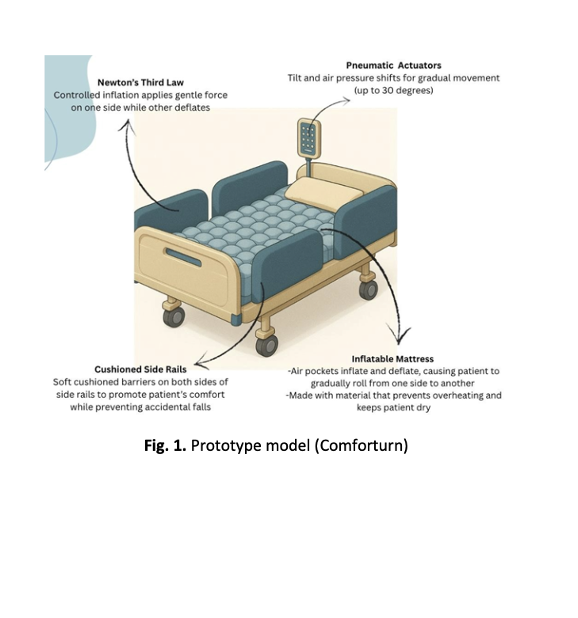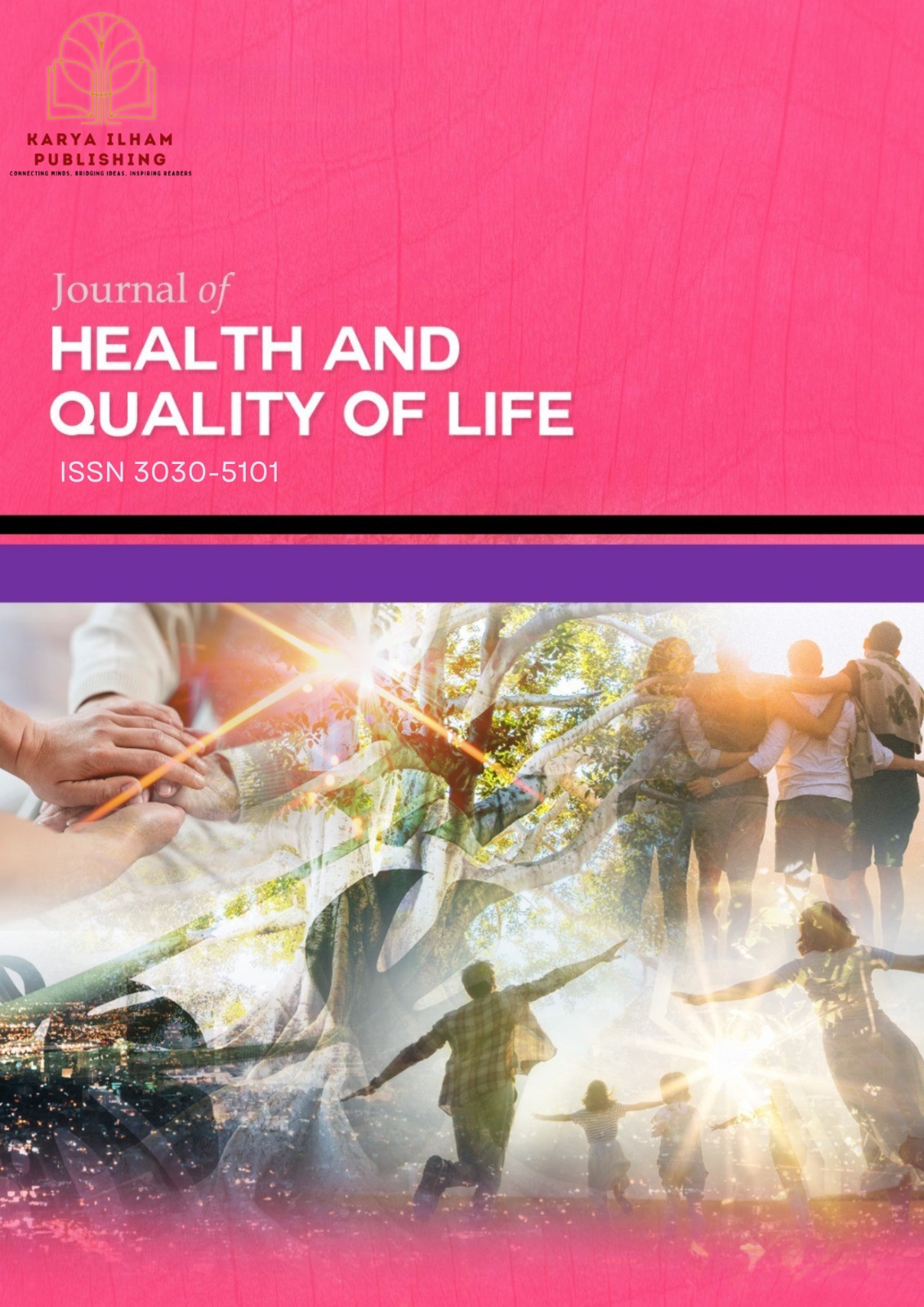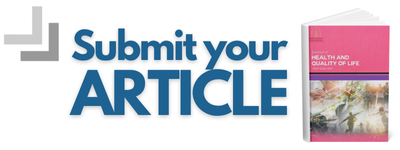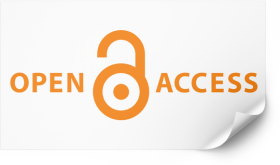Development of Comforturn: A Smart Mattress System for Automated Patient Repositioning using the 4D Development Model (A Concept Paper)
Keywords:
Pressure ulcer prevention, patient repositioning, smart mattress system, nursing ergonomics, healthcare innovationAbstract
Pressure ulcers, also known as pressure sores, are a common and preventable complication among mobile patients, resulting from sustained pressure on specific body areas. Manual repositioning is the primary strategy for prevention, but it is physically stressful, time-intensive, and not uniformly performed by care providers. Ripple mattresses provide passive pressure redistribution; however, manual tuning is still necessary and requires an automated approach. This concept paper discusses the design of Comforturn, a smart mattress system capable of automating patient turning with a programmable side tilt and wave-like motion. The goal is to lessen caregivers' work burden and increase patient safety and comfort through combined engineering and clinical approaches. This study is based on the 4D Development Model: Define, Design, Develop, and Deliver. During the Define phase, stakeholder analysis mapped the primary requirements of the nurses and patients. During the design phase, functional specifications and system architecture were developed. A working prototype was established in the Develop stage using Arduino control, and the Comforturn was tested and compared with a ripple mattress in the final Deliver stage. Preliminary findings indicate that Comforturn may significantly reduce the physical burden on caregivers, optimize the ergonomic benefits of turning, and deliver consistent, unbiased turning cycles. Patients could be repositioned more smoothly and comfortably, and caregivers benefited from less manual handling. In conclusion, Comforturn demonstrates the potential of interdisciplinary innovation in preventing pressure ulcers and improving patient care. Integrating technology, engineering, and clinical practice, this system presents a viable solution applicable in hospitals, nursing homes, and home care environments to enhance patient safety and caregiver well-being.










